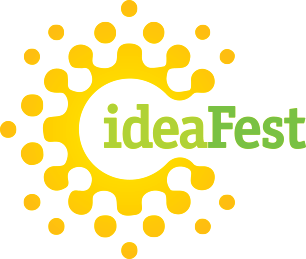May 2, 2025
Reception & Presentations 2pm to 5pm
Cal Poly Humboldt Library
Search Presenters & Abstracts
Presenters & Abstracts: Search
Morning Fuel: How Breakfast Timing and Composition Influence Cognitive Performance and Critical Thinking in College Students
Tyler
Ruys
School of Applied Health
Undergraduate Student
College of Natural Resources & Sciences
This project explores how the timing and nutritional content of breakfast impacts cognitive performance in college students, with a focus on critical thinking and memory. Findings suggest that eating a balanced, protein-rich breakfast within 1–2 hours of waking significantly enhances mental clarity and task performance.
Income inequality in the U.S. 1922-2012
William O'Neill
economics
Undergraduate Student
College of Arts, Humanities & Social Sciences
Data and historically significant factors which are thought as primary. The poster also considers comparison internationally in recent time. I'm writing this on my cell, but have put a lot of thought and work into presenting on this and look forward to it. If you would like more info please e-mail me, thank you, Bill O'Neill
Creating a Gift for the Future: Digitization Utilizing Omeka.net
Victoria Bruner
Social Work
Undergraduate Student
Cathlyn Garibay
Anthropology
Undergraduate Student
KayCie Voigt
History
Undergraduate Student
Blanca Drapeau
History
Undergraduate Student
Allie Jones
Journalism and Geography
Undergraduate Student
Nikki Martensen
Anthropology
Graduate Student
K Bromley
Anthropology
Graduate Student
Library
The Library Scholar Internship team is digitizing historically significant objects from the library’s Special Collections. This process involves more than scanning objects, but publishing to a broader research community using Omeka.net to create digital exhibits. In this poster we discuss our process creating metadata, scanning procedures, researching the collections and publicizing our work. Our goal is to encourage students and faculty to use the library’s resources such as Collaboration Stations, SkillShops, librarians, computer labs, #mondopad and peers to improve and publish their research. The library is a dynamic space for students to work on innovative and collaborative projects.
Indian Child Welfare Act Training
Allison Eldridge
Social Work
Graduate Student
College of Professional Studies
Training curriculum and presentation on the Indian Child Welfare Act.
Juvenile Coho Salmon Life History Variants in Humboldt Bay Tributaries
Madison Halloran
Fisheries Biology
Graduate Student
Darren Ward
Fisheries Biology
Faculty
College of Natural Resources & Sciences
We are assessing movement of juvenile Coho and adult straying among Freshwater Creek and two other Humboldt Bay tributaries using PIT tags and mark-recapture multi-state modeling. As salmon habitat becomes more fragmented through human actions, the need to better understand interactions between connected salmonid populations only grows. This research will focus on quantifying the frequency of juvenile dispersal between nearby watersheds to evaluate the need for changes in both management and monitoring. If there is significant movement between these watersheds, effective management and monitoring strategies of Freshwater Creek may need to be expanded to include nearby streams.
Assessing The Effectiveness of Latinx Center for Academic Excellence & Cultural Space Model Mentorship
Rosalba Gonzalez
Social Work
Graduate Student
College of Professional Studies
We will be assessing the newly implemented programming model used by the LCAE in order to understand where improvements are needed and where we can identify strengths to establish best practices at the center. We will also be looking at how many people use the center and how we can focus outreach efforts in the future. This assessment is being done for internal programming purposes and to support HSU in its larger mission to improve outcomes for students of color, particularly Latinx students at HSU.
3D Panorama of Lake Clark, Alaska
Aaron Taveras
Department of Geography
Faculty
College of Arts, Humanities & Social Sciences
This project describes the 3D cartographic methods used to design a panorama map of Lake Clark, Alaska.
Surface Ocean Distribution of Trace Metals in the California Current System During a Year of Anomalously Low Upwelling
Robert B. Freiberger
Chemistry, Oceanography
Undergraduate Student
Dr. Claire Till
Chemistry
Faculty
College of Natural Resources & Sciences
Upwelling in the California Current System (CCS) brings nutrient rich water to the continental shelf. Included with these nutrients are some trace metals. Trace iron (Fe) has been shown to be a control on primary productivity in the CCS. 2014 marked a year of low upwelling along the CA coast. This anomaly provides an opportunity to assess annual variability in processes affecting micronutrient distributions here. In 2014, the IRNBRU research cruise measured surface macronutrient and trace metal distributions in the CCS. Their results show lower nutrient concentrations than found in previous studies, and suggest an unusual uptake ratio of macronutrients by microorganisms in the area.
Indigenous People and Tiger Conservation
Rainey Strippelhoff
Wildlife
Undergraduate Student
College of Natural Resources & Sciences
My poster will be an examination of current tiger conservation efforts and how indigenous people have contributed to the recent growth in tiger populations. Traditional beliefs surrounding tigers shape the perspectives of Indigenous tribes living alongside these powerful cats. Understanding the indigenous perspective of coexistence with tigers offers conservationists new insights for promoting tiger conservation elsewhere. The poster will outline where tigers fit into the attitudes and beliefs of indigenous people living alongside them, how it affects conservation efforts today, and why it is important.
The Societal and Envrionmental Importance of Fire
Max Salusky
ENST
Undergraduate Student
College of Arts, Humanities & Social Sciences
My research project will explore the significance of fire. I will be researching the importance of fire in environments and communities, and how we can learn from past fire management in order to improve our modern fire management.
